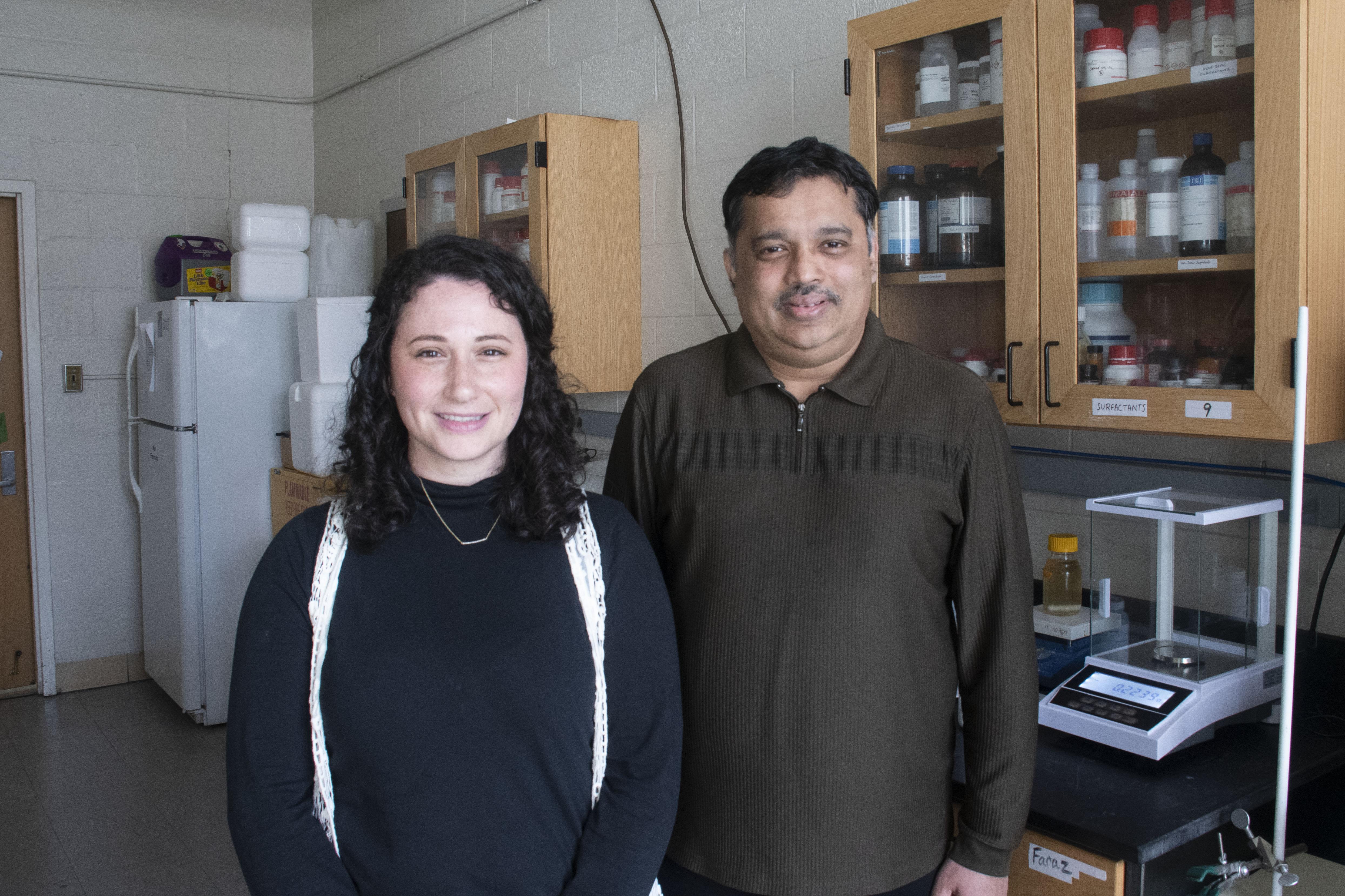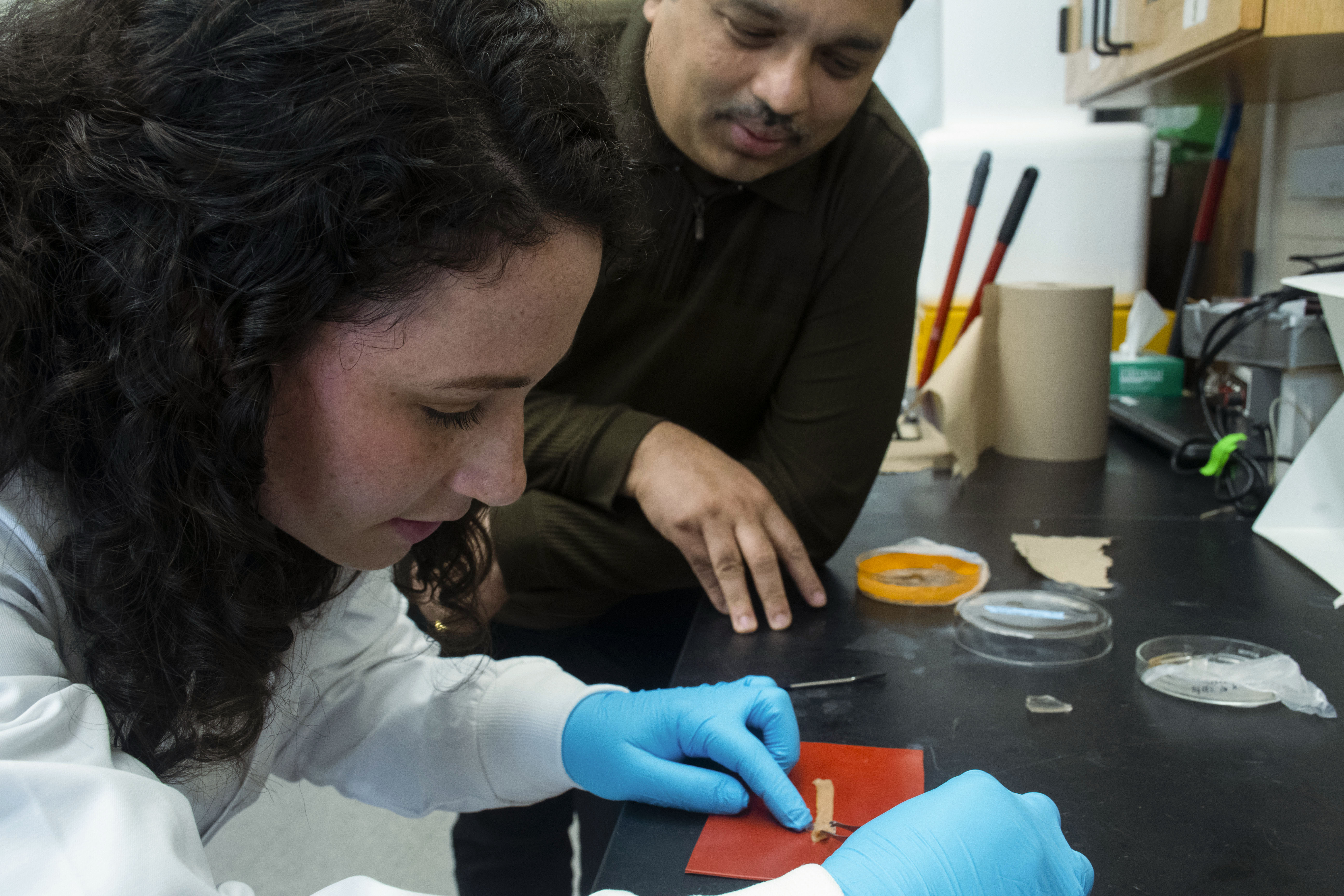
Photo by Sage Levy
Since their first known use thousands of years ago, surgical sutures—simple medical devices consisting of a needle and thread—have remained the most common method to close wounds and hold together tissue after surgery. While time has brought advancements in methods and materials, the basic nature of surgical sutures has not changed since their conception, and their use still poses significant risk of complications to patients. But what if doctors could close tissues without the use of sutures at all? Researchers at the University of Maryland (UMD) have developed an adhesive gel that could circumvent the need for needle and thread.
Complications from sutures are often caused by excessive wound tension, loose knots, incorrect knot technique, or placement, and a poor suture can lead to opening of the wound, bleeding, infection, scarring and, in worse cases, failed surgeries and death. While sutureless techniques have undergone extensive research and development in the past 50 years, the materials and methods are often expensive and explicitly designed for a specific surgery or procedure, greatly limiting their potential for widespread adoption and practice across many clinicians.
Keen to address this issue, Srinivasa Raghavan, a professor of chemical and biomolecular engineering (ChBE) at UMD, and Leah K. Borden, a ChBE Ph.D. student, used their previous experimentation with polymers to develop an adhesive patch intended to repair damaged tissues.

Photo by Sage Levy
The patch, made of a specially engineered biocompatible polymer gel, is applied across the tissues to be joined. In a process the researchers call “electroadhesion,” the gel is then placed under a direct current (DC) of about 10 volts for just 20 seconds and adhered to the tissue, creating a strong bond that rivals traditional sutures. However, unlike traditional sutures, the process is completely reversible. An opposite voltage may be applied to remove and reposition the patch, and a second attempt may be made to correct the placement.
The potential for Raghavan and Borden’s technique is clear. In the U.S. alone, 2 million anastomosis surgeries to repair tubular tissue are performed annually, and 10 percent of these surgeries are unsuccessful due to incompatible sutures in fragile tissue. With demonstrated success in animal tissues of the aorta, cornea, lung, cartilage, and certain types of skeletal muscle and bone, their method shows potential for a near universal suturing method unlike any in history. Their work shows promise in streamlining the suturing process by clinicians while obviating many of the complications of current methods, with the capability to save the lives of those most at risk from those complications.
The researchers’ invention, “Suture-free Repair for Surgery, Cuts, and Wounds,” won the UMD Invention of the Year award in the Life Sciences category. Winners were announced on May 3, 2022, at Innovate Maryland, a campus-wide celebration of innovation and partnerships at UMD.
